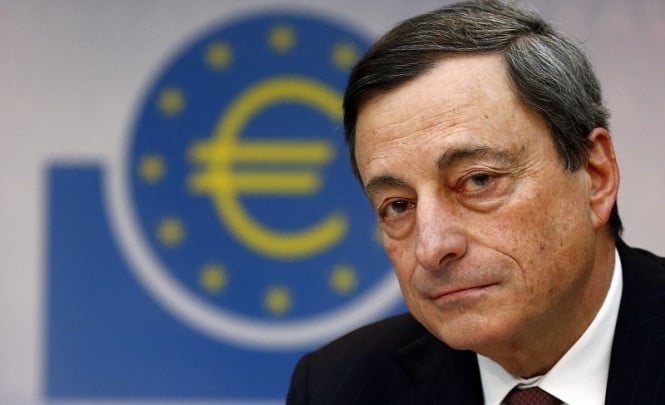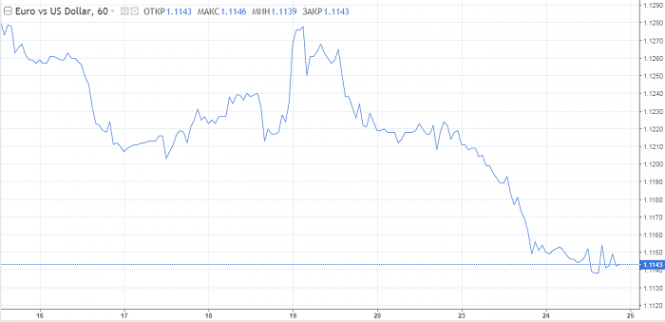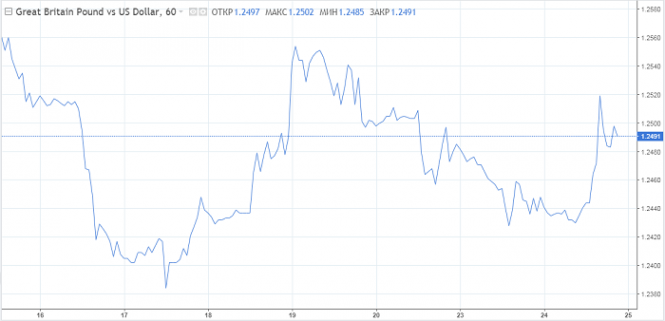
European currencies, especially the euro, are tensely awaiting for today's meeting of the ECB, which will be perhaps the most difficult this year. Currency strategists are waiting for the preservation of the parameters of monetary policy. In their opinion, European financiers will want to wait for the latest macroeconomic data in order to accurately assess the current picture of the economy. In addition, the Central Bank is not averse to start to see the scale of the projected rate cut by the Fed next week.
Traders are stubbornly waiting for a "surprise" in the form of a rate reduction. Some global investment banks share their judgment, suggesting that the European regulator may surprise everyone by lowering the already negative deposit rate today. This will be a kind of message to the market about further easing of monetary policy. With such a development scenario, the euro will continue to move down.
On Wednesday, the eurozone published such a leading indicator as the Market index, the value of which slipped from 52.2 to 51.5 in July. The data took by surprise the consensus analysts, who did not expect such a strong decline, which also spoiled the mood of the euro fans even more. The German report was even worse. Indicators of producers of goods decline to the lowest level in the last 7 years, suggesting a deterioration in the growth prospects of Europe's largest economy. On the other hand, the composite Purchasing Managers Index (PMI) fell in July to 51.4 from 52.6 and was the lowest since March. Analysts' forecast was 52.3.
Such news has increased speculation regarding the easing of the ECB's policy at a meeting on Thursday. Money markets are now laying down the rate by 10 basis points with a probability of 54%. Euro sales increased, while the main pair tested two-month lows.

It is worth noting that the weakening euro, without even waiting for it, supported the falling pound in conjunction with the dollar. The pair has grown for the first time in the last four sessions. Given that the market has already seen the weakening of the euro against the dollar, the Japanese yen and the Swiss franc, as well as the EUR / GBP pair can be regarded as the best value for money before a meeting in Europe. Thus, this helps the pound to be at its best, currency strategies comment on the current situation.

If the European regulator maintains rates again, the single currency will have a chance to consolidate in the range of 1.114-1.12 in a pair with the dollar. Commerzbank is generally waiting for the euro to rise to 1.16 by the end of 2019, even if the ECB rate is reduced by 20 basis points.
5 reasons not to lower rates
Waiting for Fed action. Americans have already set up markets for a quarter-per-cent rate cut. If the Fed surprises the markets with an aggressive step or announces the beginning of a mitigation cycle, the euro may rise. This will have a downward pressure on inflation and suppress export growth in the eurozone, resulting to a further complication in the position of the regional economy. Maybe it is really worth waiting for the verdict of the American Central Bank.
Economic data. Key indicators - GDP for the second quarter and the latest data on inflation - will be released after the ECB meeting. Any additional signals about how long the slowdown will last will help economists decide on a solution, especially in recent times the statistics is ambiguous.
Latest forecasts. Typically, the ECB adjusts monetary policy when it publishes latest economic forecasts. This is due to the fact that the revised estimates help explain the motives for the increase or decrease in incentives. Updated estimates will be presented in September.
Market expectations. When deciding on a rate at the Central Bank, they do not rely on market expectations, but do not ignore them. Traders do not put in the price the full probability of reducing the rate by 10 basis points on Thursday. Therefore, the earliest easing may signal that the economic situation in the region is worse than expected.
The complexity of the mechanism. The measures that the ECB may announce will require a thorough discussion of their application. Reducing the negative rate on deposits will require an adjustment to the mechanism for regulating bank deposits. At the moment, the monetary authorities hardly have a single position on this.
The material has been provided by InstaForex Company - www.instaforex.com